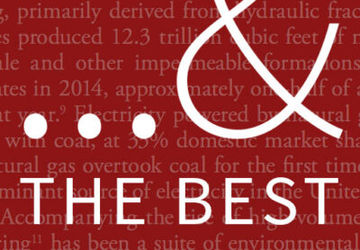Tida Rau works at her desk during her Washington Water Trust internship.
Tida Rau (she/her)
Hometown: White Salmon, WA
Major: Earth Systems ‘24
Internship: Washington Water Trust
Tida Rau reflects on her time spent working for Washington Water Trust as a Bill Lane Center for the American West intern
Schaenexw (salmon) have always assumed a center-stage role in my life, providing my cultural diet, my father’s profession as a tribal salmon hatchery manager, even my hometown’s name (White Salmon). Despite the unwavering presence of salmon in my life, they remain in a vulnerable state due to a history of overfishing by the sport and industrial sectors, habitat destruction, and human-induced climate change. To be quite frank, I don’t have a specific job that I aspire to when I “grow up.” However, I am most certain that I want my career to benefit salmon populations, and in turn, the people and communities that I love. At Washington Water Trust (WWT), I am both continuing to build my professional toolbox of skills and knowledge as well as actively contributing to the protection of salmon.
Washington Water Trust strives to protect and restore Washington’s waterways, namely by improving streamflow. As the wellbeing of salmon depends upon the health of the rivers and streams in which they populate, working for the water equates to working for fish – something I witnessed firsthand last summer interning for the Yakama Nation’s Cle Elum Supplementation and Research Facility, funded by the Bonneville Power Administration. As opposed to taking a regulatory approach, WWT banks on cash incentives and feasible sustainable water substitutions to inspire water usage change. They strive to achieve results through a diverse portfolio of specialized projects tailored to each specific, unique watershed they work in with an emphasis on fostering collaboration amongst water users and stakeholders (farmers, tribes, irrigation districts, the Department of Ecology, and more). These projects are facilitated by the team of project managers which comprise the meat of WWT.
So far, I have had the privilege of dipping my toes in and supporting several ongoing projects, most extensively the "dry-year leasing" and "water source switch" endeavors within the Dungeness River basin. Both projects entail working directly with water users to adapt their water consumption to keep the river flowing at a fish-friendly volume. While dry-year leasing involves establishing temporary arrangements with irrigators to decrease their water usage in exchange for cash incentives during the late summer dry period, water source switch seeks to produce longer-term arrangements in which water users substitute water from an alternative source (e.g., groundwater or recycled water) in place of surface water. Both strategies leave more water in rivers and streams, providing for salmon passage. I am specifically on the hook for sleuthing out significant water users in possession of surface and groundwater rights, potential candidates for the projects. My hope is that my findings expedite the process so that salmon feel the results sooner and my fellow WWT members can expand their focus to other projects/basins.



